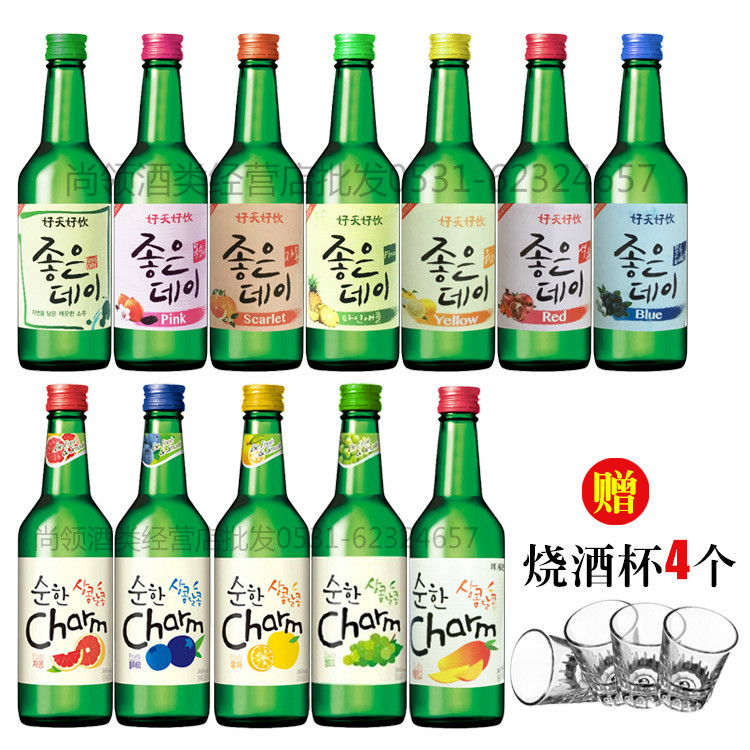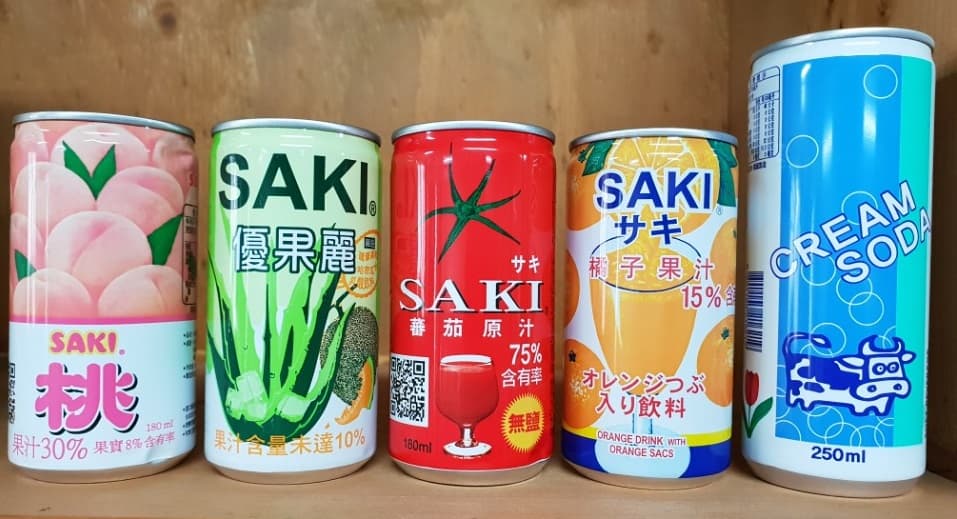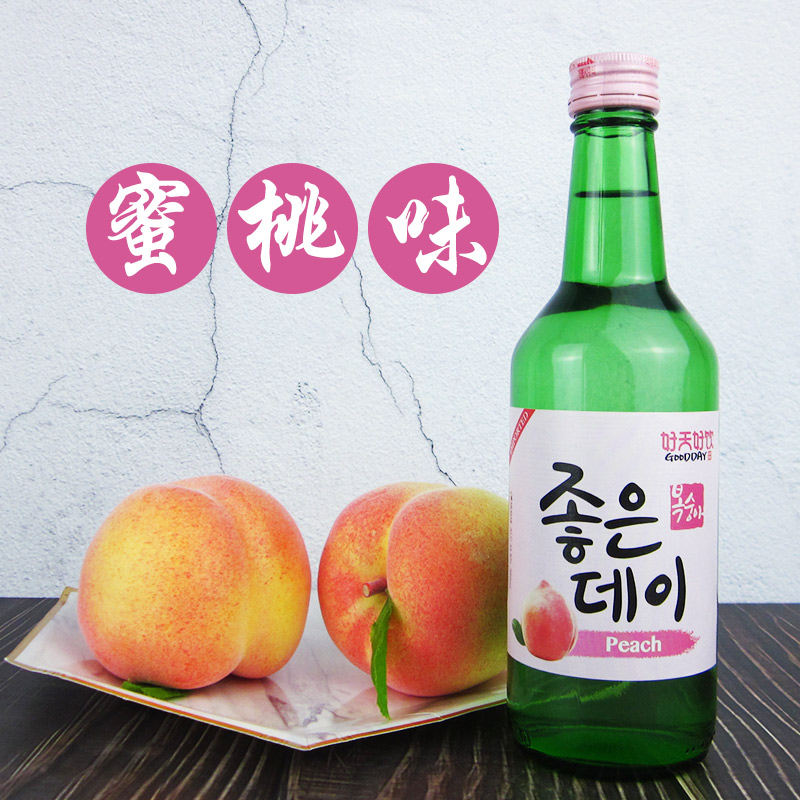
Unfiltered Sake Korean Brand Must HAVE ! Wine bottle, Rosé wine bottle, Sake
Makkoli is the Korean equivalent to sake and is essentially a rice wine that is fermented (not distilled). It's left unfiltered and has a tangy flavor because it naturally contains a lactic acid similar to that found in yogurt. Fast Facts Ingredients: Rice, sweet potato, barley, tapioca, wheat Proof: 32-90 ABV: 16-45% Calories in a shot: 43

[USD 64.52] Sake Korea shochu wine imported fruit flavor shochu good day good drink Super water
Shochu is similar to Korea's soju in that it's distilled, clear in color, and has a similarly low ABV of between 25% and 30% on average. It's also fairly neutral tasting, with some sweet notes depending on the starch used, and like soju, can be used in a variety of cocktails and other mixed drinks.

How To Drink Saki The Right Way Lipo Lounge
December 26, 2021 5 minute read Sake and Soju are alcohols well-known to their native lands. For example, the former is from Japan, while the latter is from Korea. Due to their popularity, you may wonder about their differences (if they aren't the same) and which is better (if you want to compare both).

[USD 17.13] Korean fruit flavor shochu sake good day good drinking peach fruit wine shochu 4
Soju Soju is a clear spirit that originated in Korea. It was traditionally made with rice but, ever since distilling rice was banned during the Korean War, distillers have used other grains and.

Chung Ha Korean Sake 300ml, 6 Yelp
Makgeolli Makgeolli is a traditional Korean alcoholic beverage that dates back thousands of years. It is a rice wine that Koreans would home-brew. The drink is brewed using rice and nuruk (a fermentation starter used for a faster brewing process.) Even with the fast brew, makgeolli still takes 7-10 days to make.

Sehwang Jujo Korean Sake Bottle on Behance
Soju ( / ˈsoʊdʒuː /; Hangul: 소주; Hanja: 燒酒) is a clear and colorless Korean distilled alcoholic beverage. [1] [2] [3] It is usually consumed neat. Its alcohol content varies from about 12.9% to 53% alcohol by volume (ABV), although since 2007 low alcohol soju below 20% has become more popular. [4] [5]

SAKI brand fruit juice series 180ml & 250ml tradekorea
8. Hemosu Soju. Instagram. Perhaps the only soju that shares a botanical blend more like tasting notes found in gin than vodka, Hemosu Soju produces several luxury bottles besides its flagship.

Chum Churum Peach Sake The Strath
Short answer: It's Korea's national drink, a grain-based spirit that's often served in shot glasses. It also happens to be the best-selling liquor in the world by volume and gaining more.

[USD 17.13] Korean fruit flavor shochu sake good day good drinking peach fruit wine shochu 4
In South Korea, Somaek (소맥) refers to a cocktail made by mixing soju and beer. The word is a syllabic abbreviation of the words 'soju' (소주) and 'maekju' (맥주). For those newer to Korean food and drink culture, soju is a traditional type of Korean liquor often made with rice, tapioca, or sweet potato. Then, 'maekju' is the.

Lotte ChungHa Korean Sake NTUC FairPrice
1 Different types of alcoholic drinks in Korea 1.1 Korean Alcohol #1: Soju (소주) 1.1.1 Soju Alcohol content 1.2 Korean Alcohol #2: Bokbunja (복분자) 1.3 Korean Alcohol #3: Maeshilju (매실주) 1.4 Korean Alcohol #4: Korean Rice Wine/Makgeolli (막걸리) 1.5 Korean Alcohol #5: Dongdongju (동동주) 1.6 Korean Alcohol #6: Sansachun (산사춘)

Sehwang Jujo Korean Sake Bottle on Behance
Korean sake is a traditional alcoholic beverage made from rice. It is also known as "rice wine" or "rice vodka". Korean sake is made by fermenting rice with yeast and water. The fermentation process takes about two weeks. After fermentation, the rice is distilled to make the final product.

How to Make Homemade Korean Sake Makgeolli with Koji Multiculturiosity
Makgeolli (Korean: 막걸리; lit. raw rice wine; [mak.k͈ʌɭɭi]), sometimes anglicized to makkoli (/ ˈ m æ k ə l i /, MAK-ə-lee), is a Korean alcoholic drink.It is a milky, off-white, and lightly sparkling rice wine that has a slight viscosity, and tastes slightly sweet, tangy, bitter, and astringent. Chalky sediment gives it a cloudy appearance. As a low proof drink of six to nine.

Sake vs Soju vs Shochu Key Differences & How to Drink Them Tatler Asia
You will often see Koreans drinking shots of this distilled spirit with foods such as tteokbokki (spicy rice cakes), kimchi jjigae (kimchi stew), doenjang jjigae (soybean paste stew), and samgyeopsal (Korean pork belly barbecue). For many Koreans, they treat soju as a palate cleanser for these types of food.

Korean Shochu Sake Fruity Wine Good Day Drinking Wine Cocktail Korean Wine Optional 4 bottles
Cheongju ( 청주; 淸酒; literally "clear wine"), sometimes romanized as Chungju, is a clear, refined rice wine of Korean origin. [1] Names The word cheongju ( 청주; 淸酒) consists of two characters: cheong ( 청; 淸) meaning "clear" and ju ( 주; 酒) meaning "alcoholic drink". It contrasts with takju ( 탁주; 濁酒 ), as "tak" ( 탁; 濁) means "turbid".

Korean shochu, sake, fruity wine, good day, good drink, wine, cocktail, Korean wine, 4 bottles
At its most basic, soju is a clear, 20-24 percent alcohol by volume (ABV) spirit. It's from Korea, and is mostly consumed in Korea, Japan, and China, with Jinro being the most popular brand. Soju.

The SAKITINI. In a shaker with ice mix equal parts of vodka, peach schnapps & saki. It's a
Best Flavored: Mizu Green Tea Shochu. Courtesy of TotalWine. Buy on Drizly Buy on Flaviar Buy on Caskers. ABV: 35% | Base: Green tea and rice | Tasting Notes: Matcha, Passionfruit, Nori. Green tea has strong ties to Japanese history—it's said the first seeds were planted in the Saga prefecture over 800 years ago.